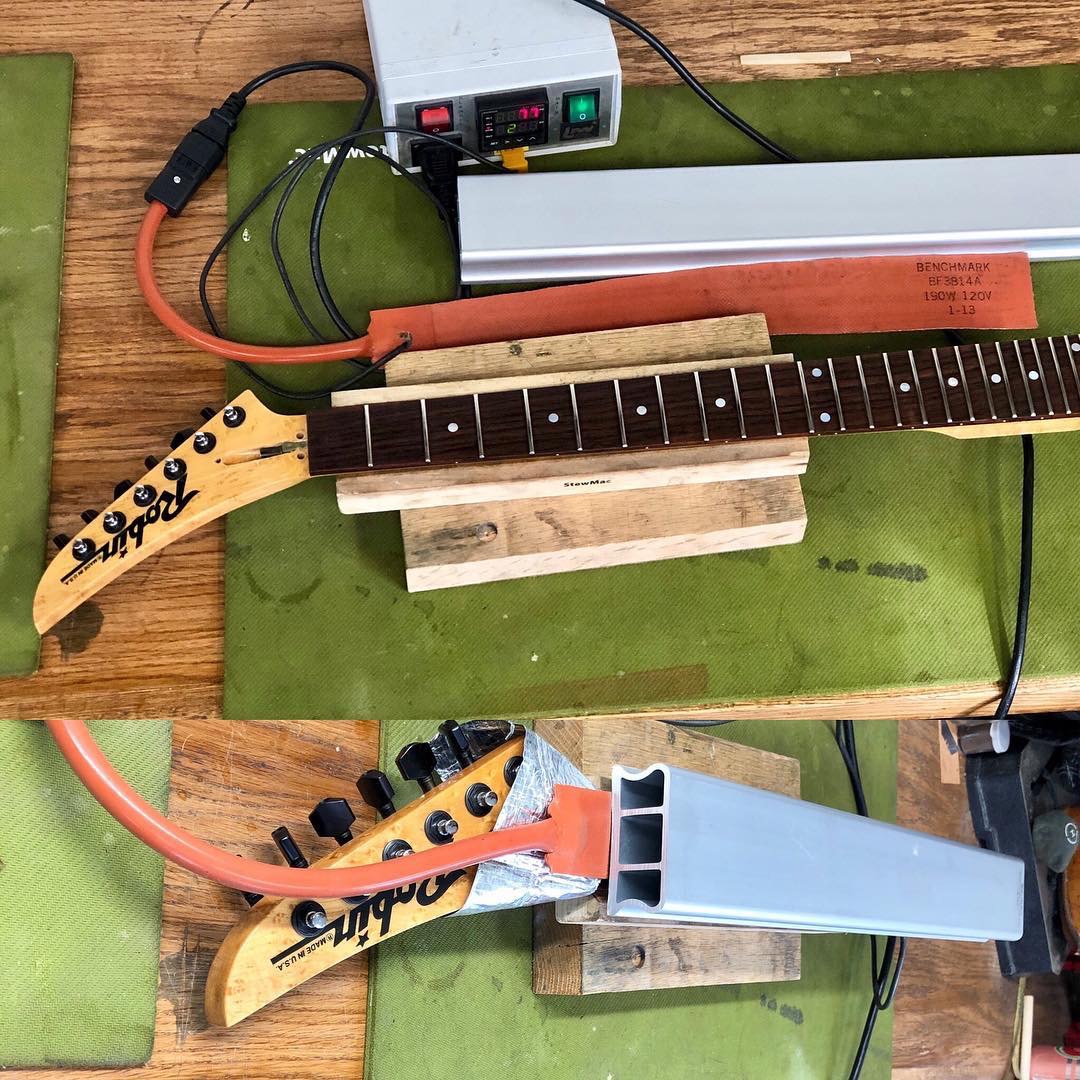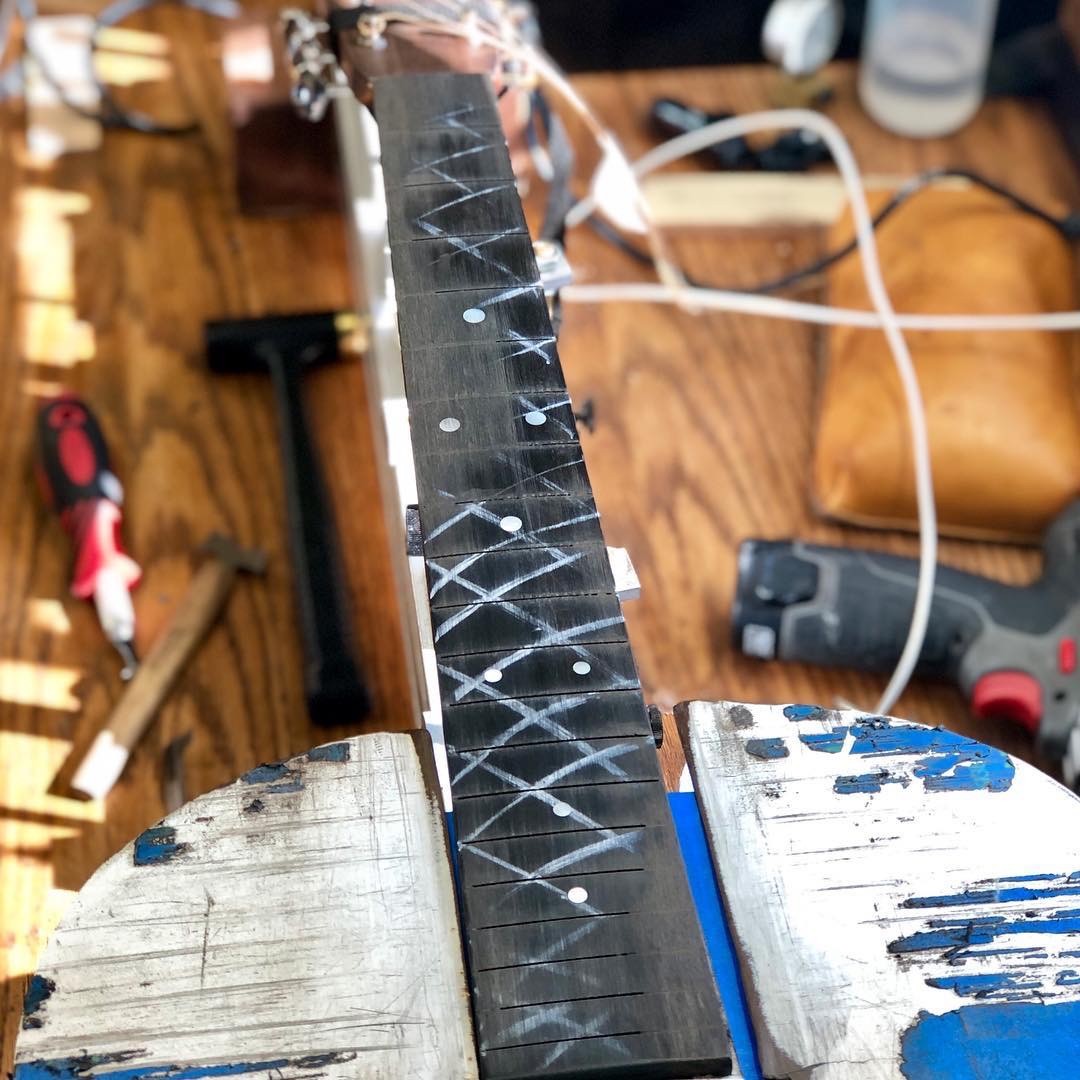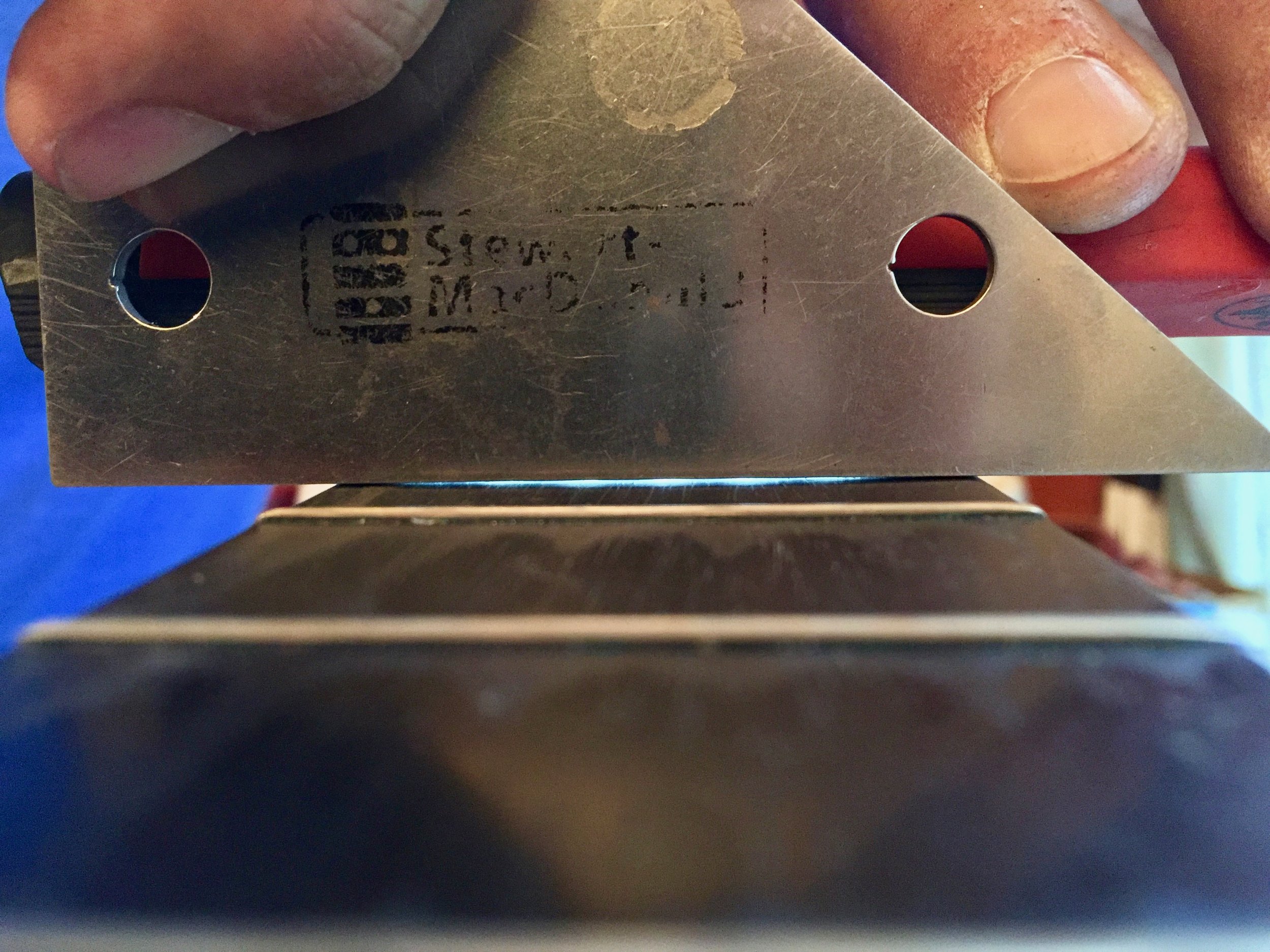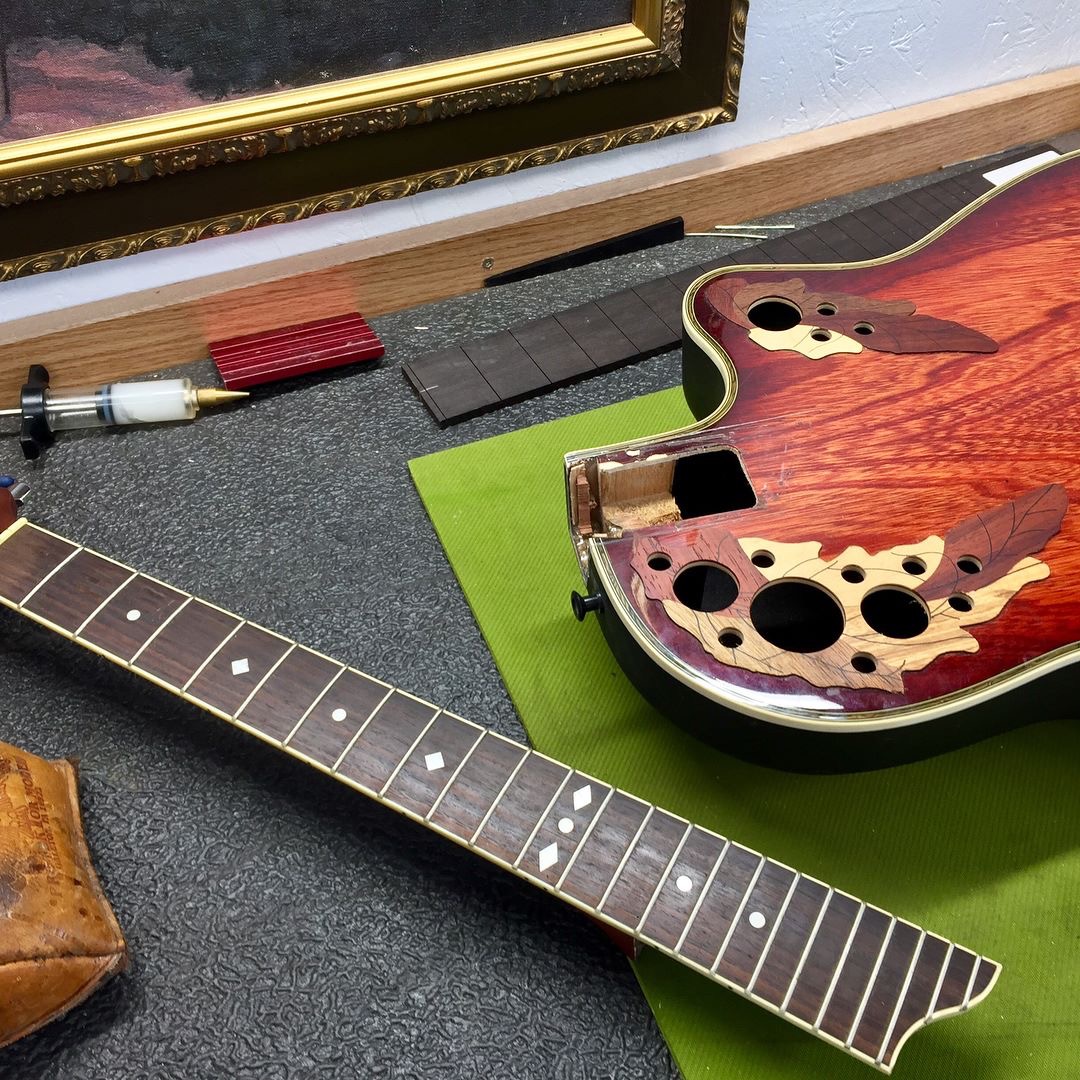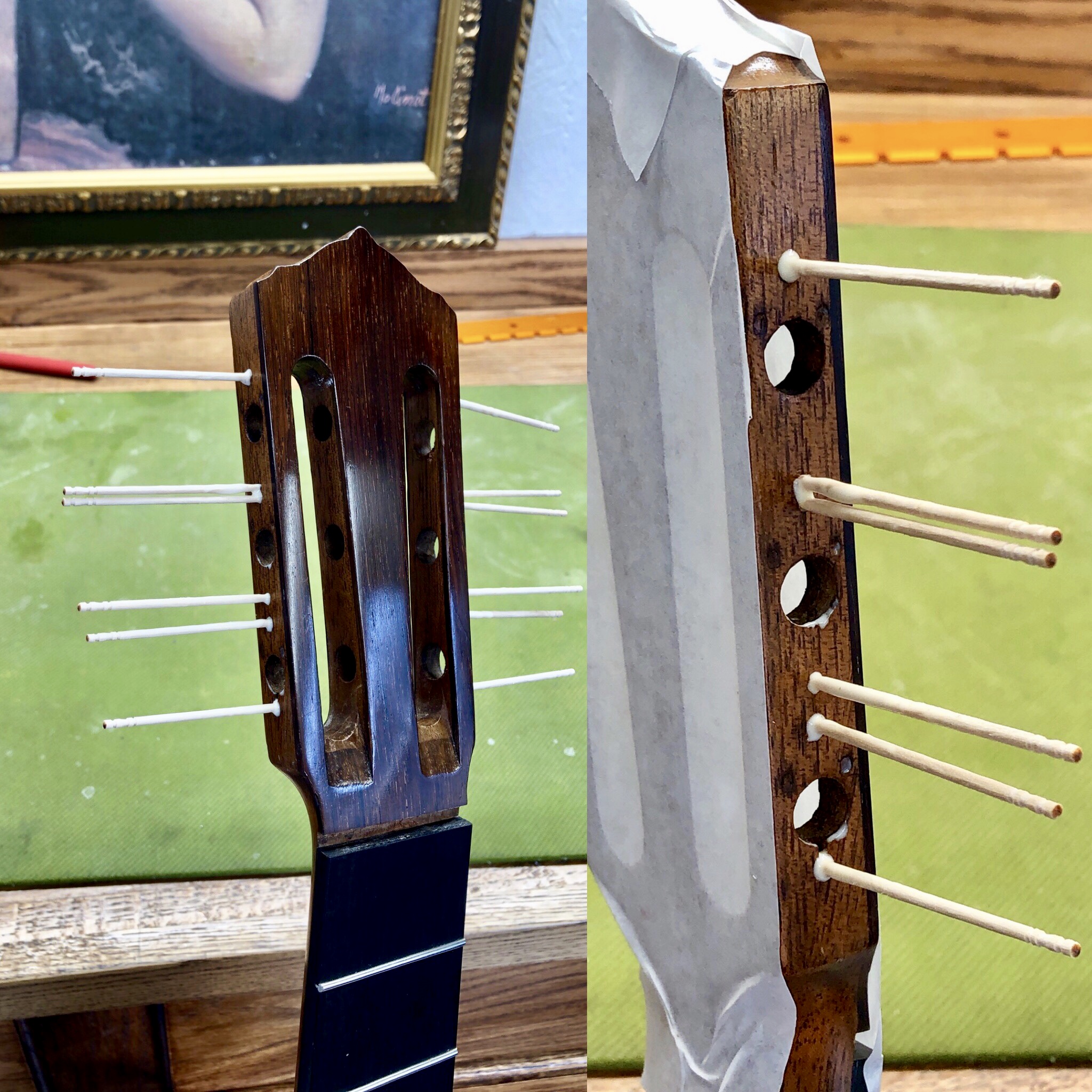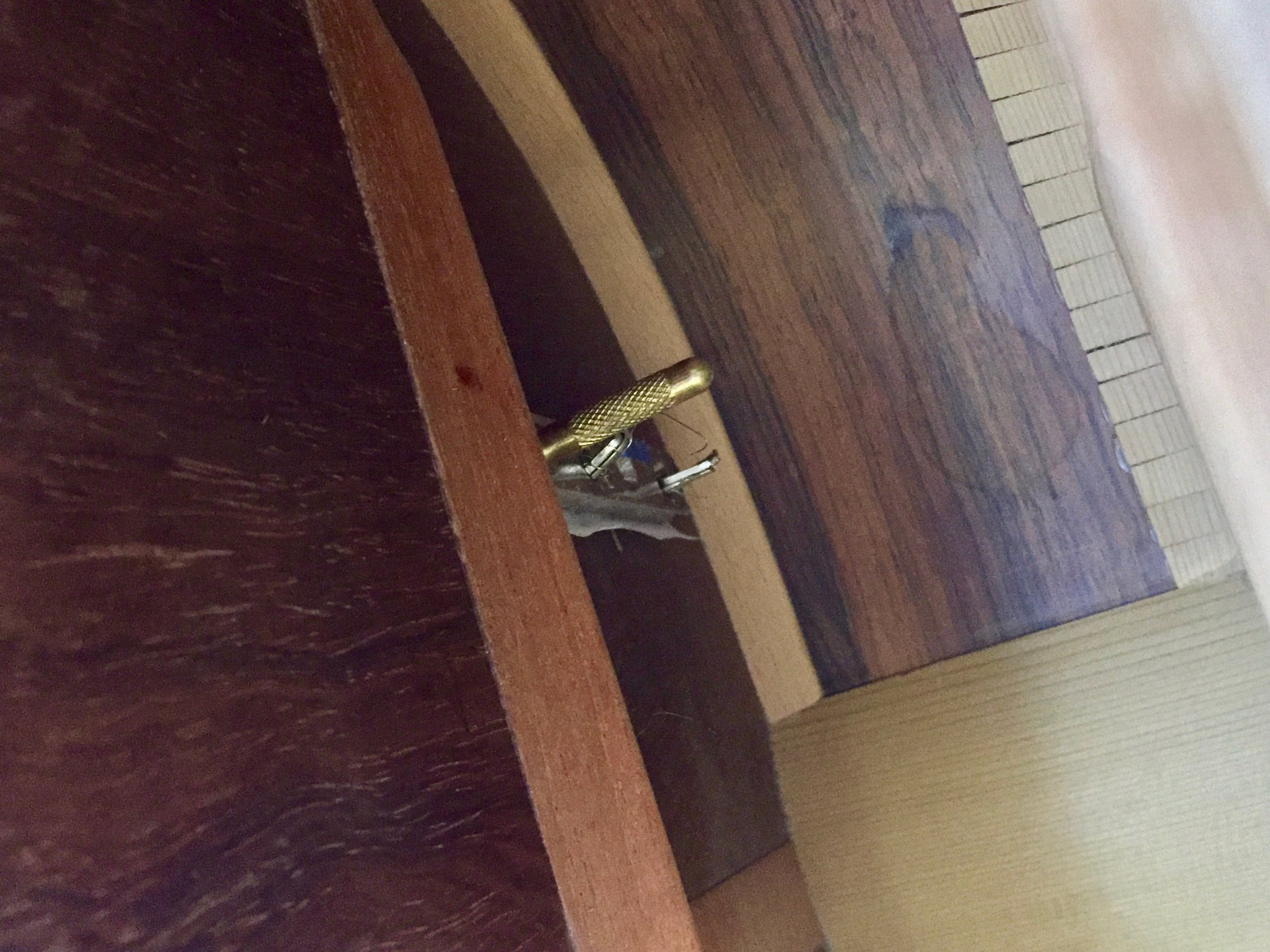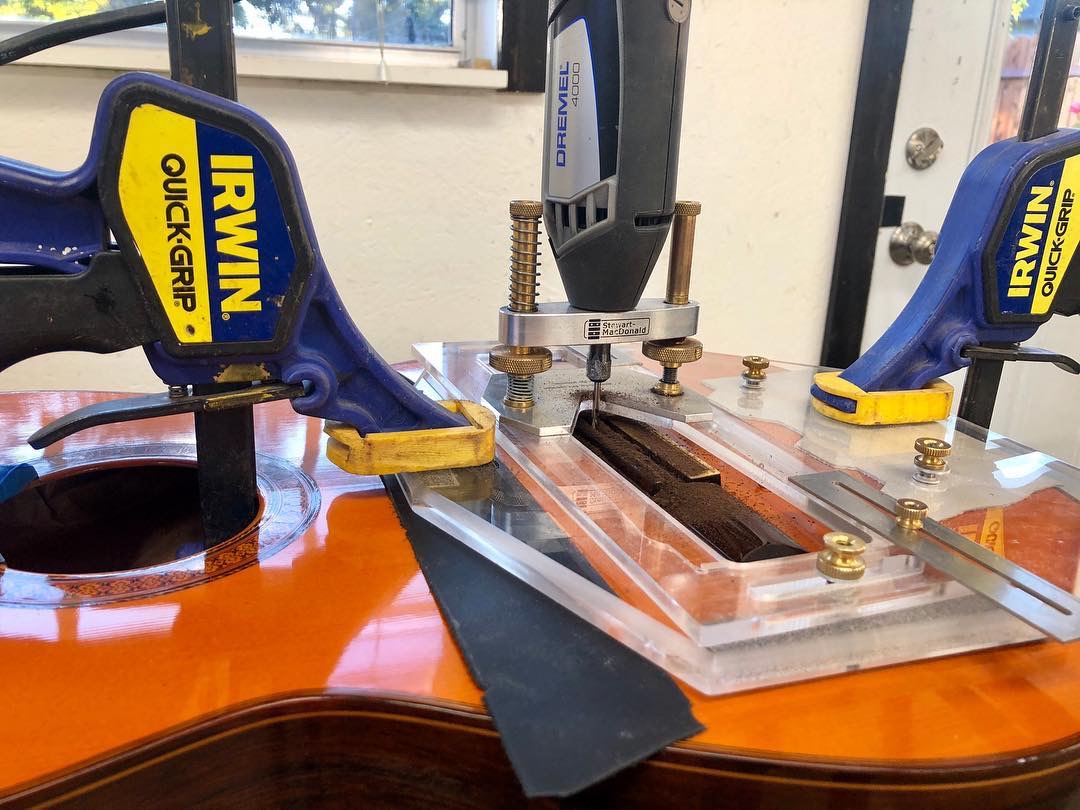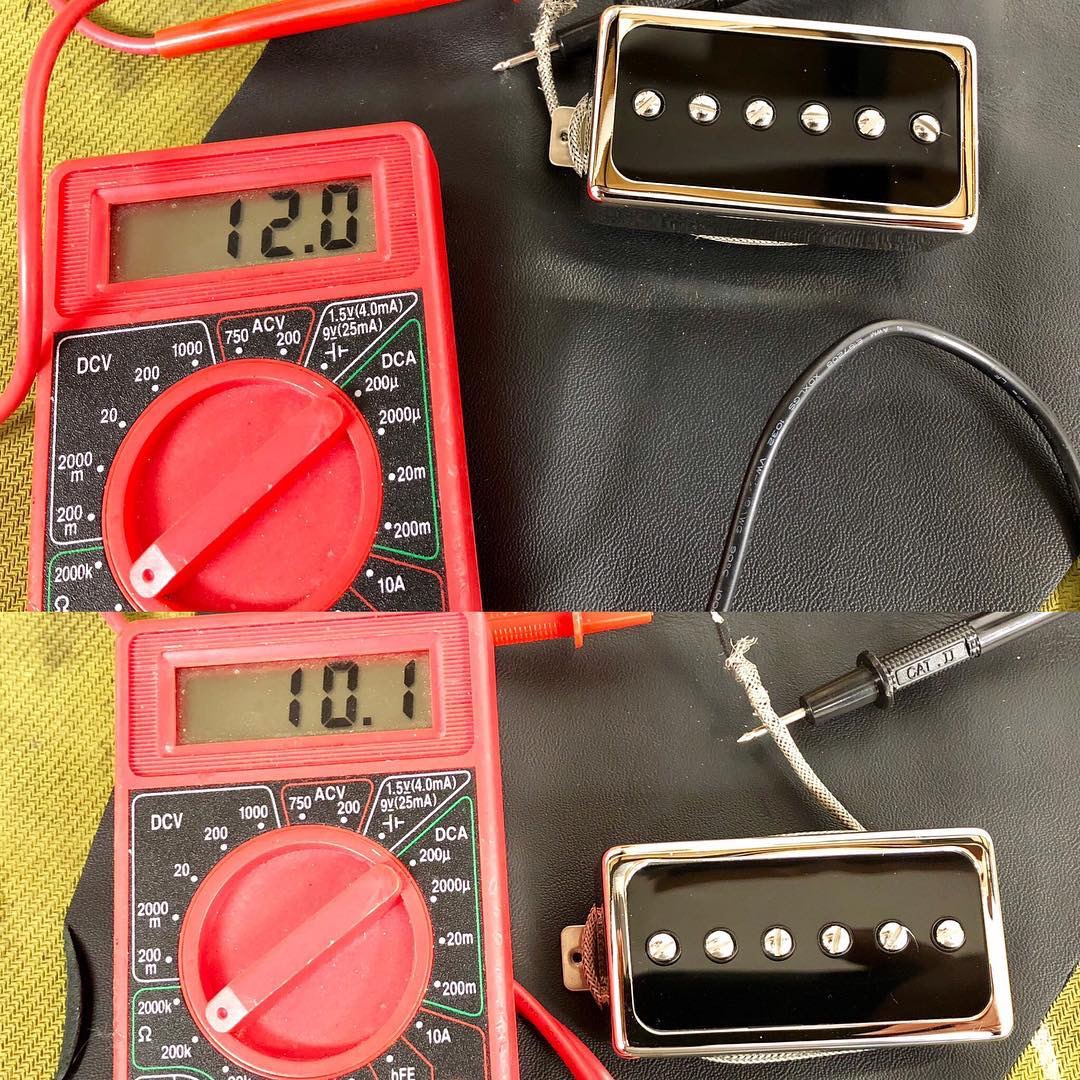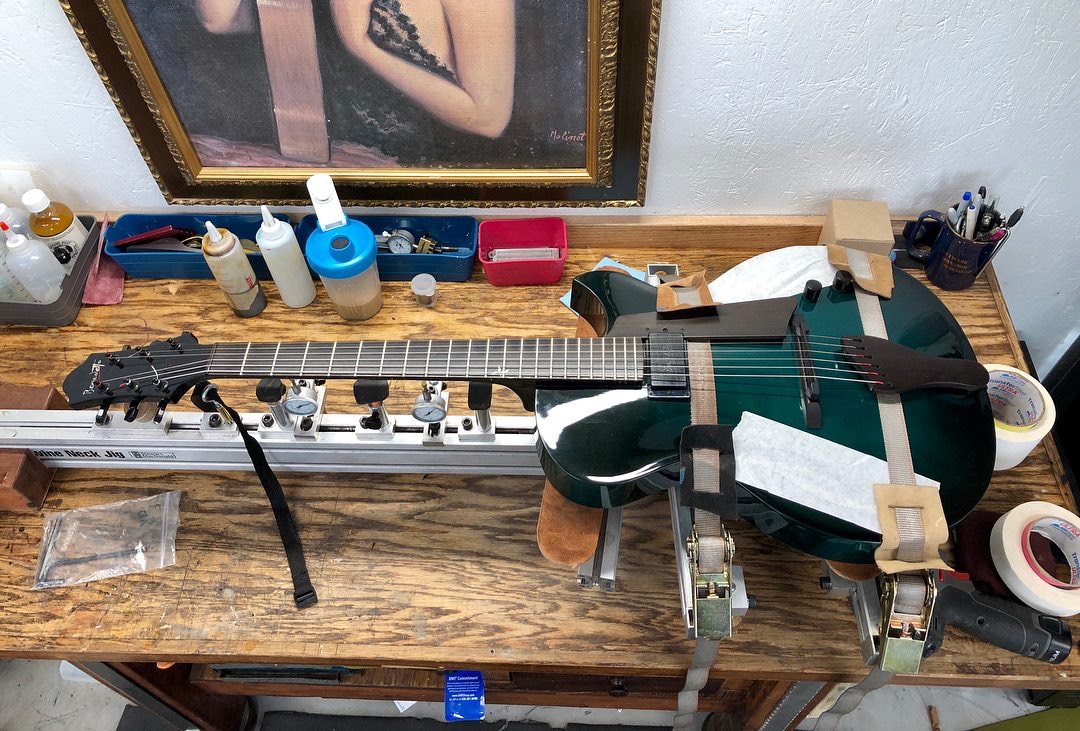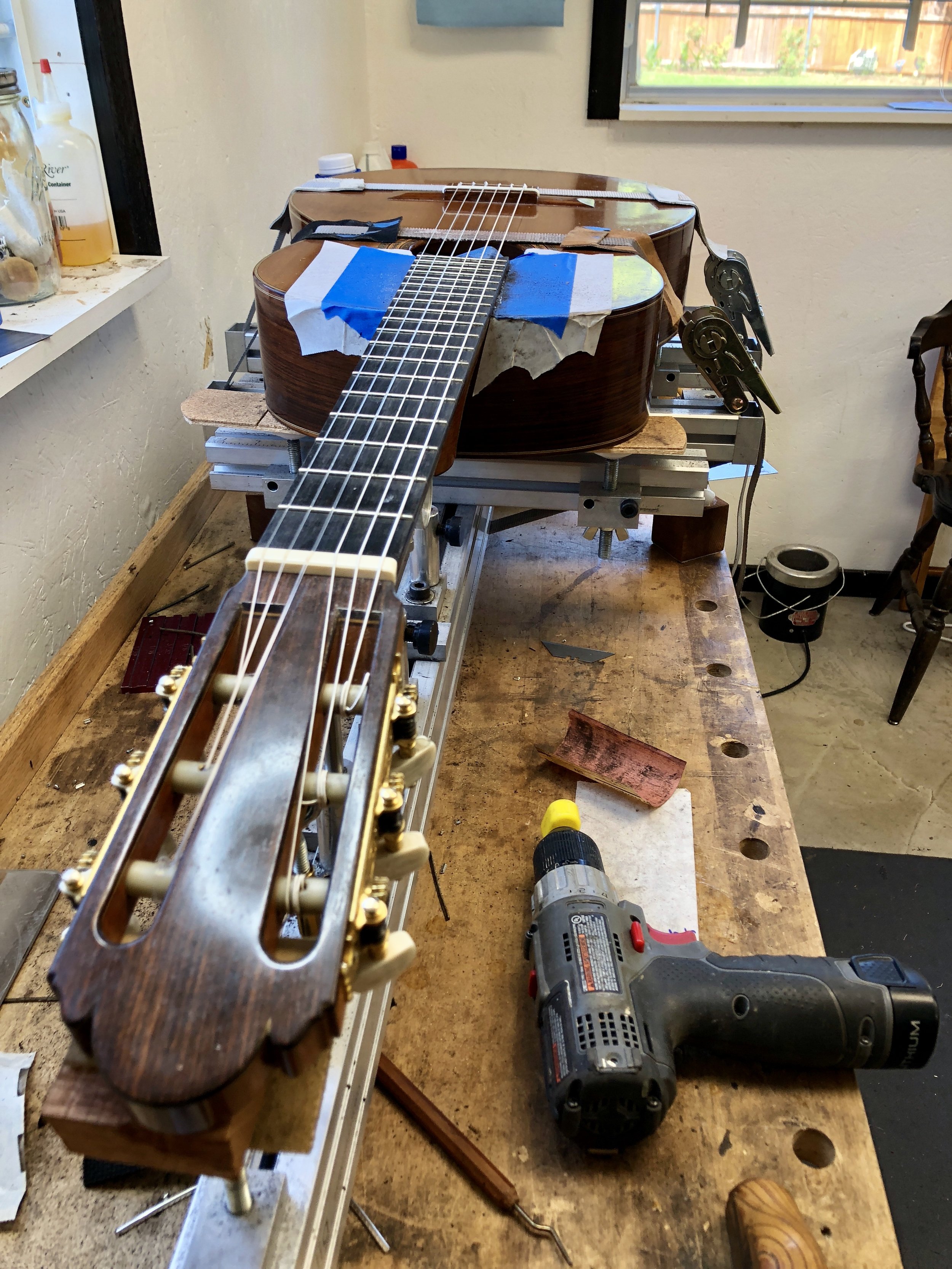Repairs
Neck Relief & Action
Neck Relief is an often misunderstood part of what makes a guitar play comfortably. Because guitar strings vibrate in a parabola some relief or neck bow is needed to allow the string to arc and not hit the frets. Many factors determine the ideal amount of relief such as the musicians technique, how hard they set the string in motion, the condition of the fingerboard and frets. In general the straiter the neck the lower the action but lower action requires more accuracy from the guitar and musician. Traditionally classical guitars do not have truss rods so the relief must be built into the fingerboard. Modern guitars have a rod in the neck which makes the process quick and easy.
Action is the distance from the bottom of the string to the top of the fret measured at the nut and normally the 12th fret. There are benefits to both low and high action and many professional musicians like to have two saddles cut for their guitar one set lower and the other a bit higher, allowing the player to drive the guitar harder. Humidity and season change will affect the action on lighter luither built guitars more than heavily constructed factory guitars. The lower the action the more accuracy is demanded from the fingerboard and proper technique from the musician for the guitar to not buzz.
Full Set Up
When lowering the action the strings are brought closer to the frets and any unevenness will cause the instrument to buzz. Assuming the fingerboard is true its best to do a light fret level and crown prior to set up, this ensures the fret tops are level and the round or crown is filed back into the fret. The frets are then polished to a mirror shine, finger board is buffed/oiled, tuners are adjusted and oiled. If applicable the truss rod is adjusted, intonation is set at the bridge. The action is set at the nut by filing the string grove then the action is set at the bridge, the instrument is polished, conditioned and a new set of strings are installed. A basic set up only adjusts the rod, nut/saddle and intonation if applicable.
Fretwork
There are may reasons why a guitar may need new frets, the simplest being they are worn out. What I have found is fret issues are just a symptom of a problem with the fingerboard causing the unevenness to project through the frets. Most fingerboards are slab sawn which are not as stable as quarter sawn wood, this means the board can take on a dip or twist over the years and the solution is to pull the frets plane the board correctly and radius if needed then refret. An other common issue is when the fingerboard takes a quick rise where it meets the body past the 12th fret. Some people grind the frets down in this area but the proper fix is to deal with the fingerboard under the frets. I use the Earlewine Fretting jig when reading and fretting guitars, it allows me to work under simulated string tension, I choose to glue my frets down with CA or Hide Glue in addition to a mechanical friction fit. A proper fret job should improve the resonance and intonation of your guitar. I keep many standard 18% Nickel fret, EVO gold and stainless fret sizes on hand so the musician can pick the wire best for their hand and playing style.
Neck Resets & Finger Board Replacement
A neck reset or replacement fingerboard is needed when the action needs to be lowered at the saddle but there is no more material to remove. This can be caused by many factors including the top bellying or collapsing over time, improper neck angle at the time of construction, bridge plate failing and or excessive postive neck relief. If the guitar is fitted with a dovetail or mortise and tenon neck joint the neck can be pulled and reset to the proper angle, a fret job and new saddle will be required. Because of how classical guitars are constructed with the sides of the body tucked into the heel removing the neck is impossible. The solution calls for the fingerboard to be heated off and either shimmed or completely replaced. These are highly skilled labor intensive jobs that are best reserved for a competent shop. Pictured is a 1973 Ramirez 1A with the fingerboard freshly removed, heat, hot water and warm spatulas are used to separate the glue joint.
French Polish Restoration
French Polish is the name for the process of hand applying Shellac and burnishing it to a mirror gloss. Shellac is the traditional finish for classical guitars because its the most flexible and tonally transparent, French Polish is not superior to lacquer just different. French polish or shellac must be cared for and periodically cleaned and waxed. It is standard practice to have the finish refreshed by applying a few layers of shellac to bring back the luster but more importantly to keep the finish providing a protective layer on the instrument. If the finish has worn off to bare wood the guitar is no longer protected and could be susceptible to loosing moisture causing cracking or allowing oils from the hands to stain the wood. Pictured is an Ignacio Fleta that I refretted and rejuvenated the finish on, once the finish cured I waxed the guitar with Alfie Shine a natural wax made from an 18th century formula comprising several tree resins and bees wax.
Nuts and Saddles
The nut and saddle are the two points where string energy is transmitted into your guitar. It is important the nut and saddle are fit properly to allow for maximum tonal cupeling or simply put energy transfer. A saddle that rocks in its slot wastes energy, one that fits snuggly with maximum contact on three sides will allow the string to transfer all its energy. Choice of material is something else to consider. Are you wanting a brighter sound, more resonance and rounder bass, slow down a punchy attack? If you are installing a piezo pickup bone may not me your best bet, Tusq is the preferred material. Many of my clients have have two or three sets of nuts/saddles cut to the same height but different materials so they can mix and match to fit the repertoire. I keep brass, unbleached ox, camel and bleached cow blanks on hand and can order exotics like fossilized mammoth, fossilized walrus and preban ivory. The nut pictured was removed from a notable luthier’s guitar, sadly it is an example of a poorly cut nut. Note how the string slots are crooked, V shaped not U shaped like the bottom of a string and it was not making full contact on the bottom.
Other Repairs
Many other services are available if you need a repair or modification made feel free to contact me.
